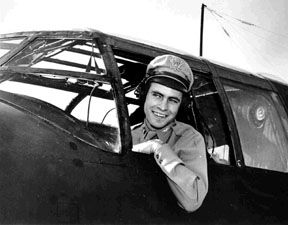“Then the Whiskey Started to Come in Handy”
|
||||||
|
Editor’s note: The introduction to this series of stories, By R. T. King, University of Nevada, included commentary that I will repeat a portion of here to promote better understanding of their interpretation of the oral history stories contained in their publication. “... Oral discourse can be practically impenetrable when represented in print: empty of gesture, inflection, tone, and other nuances that go unrecorded on tape, or for which there are no symbols on the keyboard, transcripts are full of fractured syntax, false starts, repitition, and general disorder. To make them easier for me to work with, Vikki Ford, performed a valuable first edit of fourteen of the transcripts, Jeanne Harrah bringing the remainder through this difficult process. From these refined transcripts, I then composed the stories in the voices of the veterans. Its oral origins not-withstanding, in general the text reads like that of any other book, but the reader will encounter some unconventional devices that are employed to represent elements in the dynamic of spoken language: [laughter] appears when a veteran laughs in amusement or to express irony; other bracketed information reveals the unspoken emotion that drives some passges; and ellipses are used not to indicate that material has been deleted, but that a statement is being made haltingly... or there is a pause for dramatic effect...” |
||||||
| Clarence Becker was born in Rochester, New York, November 18, 1918. During World War II he enlisted in the Army Air Corps and received extensive training in reconnaissance. In the autumn of 1943, Becker was stationed at MacDill Field in Tampa, Florida, preparing to fly to India on special assignment.
Left: Clarence Becker in cockpit of an F-10 (reconnaissance version of the B-25) |
||||||
 |
||||||
 |
 |
|||||
| Our F-10s (reconnaissance versions of B-25s) had names painted on them, and mine was the “Quivering Queen” — a brand new plane. In November, 1943, just two days before we were to leave, my plane had its five-man emergency life raft replaced with a seven-man raft, which was stowed above the bomb bay in the upper part of the left side of the fuselage. My entire crew plus all of our equipment and special cameras were on board for the flight across the Atlantic. At 20,000 feet over the Gulf just west of Fort Myers, Florida, up above an overcast, the life raft popped out and caught on the left side of the tail, right where the vertical and horizontal stabilizers meet. This so upset the aerodynamics that the airplane began to shake. I asked my navigator to give me a course back to MacDill, and we started letting down through about 7,000 feet of overcast, with the airplane vibrating heavily.
By the time we broke out of the overcast, I could see MacDill Field way off to the left, but I could also see that the engines were moving about a foot in their mounts and pouring black oil. I was convinced they wouldn’t be with the airplane when it hit the ground. Because of the noisy vibration, we did not have any communications from the cockpit to the people in the back, so I sent my co-pilot back and told him to make sure everybody was out of the rear before he went. Everybody bailed out at about twelve thousand feet — pretty high, because we didn’t know how soon the airplane would come apart. Once left on its own, it moved violently and actually turned in a great wide circle. Then about fifteen hundred to two thousand feet from the ground, it just came apart in three pieces; the nose section; the wings and the bomb bay together; and the tailsection. My co-pilot wound up in a tree, but the rest of us landed in good shape — I got a little bruise from hitting the aircraft on the way out. Somebody picked me up close to where Busch Gardens is now, and we went over to the wrecked front end of the airplane, where I found my little ?fifty-mission? crusher hat, put it on, and headed back to MacDill. I called my wife and said, “I’ll be a little late for dinner tonight. I had to bail out of the Queen.” [laughter] We returned from India in March, 1944, and we were sent to Salina, Kansas to train on F-13s, reconnaissance versions of B-29s, in early August. We really had problems with the first ones. They would overheat all four engines; the cylinder head temperatures would be in the red. We would go through an absolute minimum pre-flight checklist, tow the airplane to the end of the runway, start the engines and be airborne within a minute or two after starting the fourth engine; and still, all four engines would be in the danger area before we ever got off the ground. We would be flying across the wheat fields of Kansas at about a hundred feet, wondering, “Well, should I just leave the power on and climb, or shall I power back and scoot across the wheat fields?” We finally got to the point where we would just go ahead and leave the power on, and then when we got some altitude, throttle her back. End of Page 1 — Go to Page 2 Go To Story Introduction — U of Nevada Reno Page Home - Contact Us - Cold War Hist. - 91st SRS Hist. - Stardust 40 Mission Story |
||||||